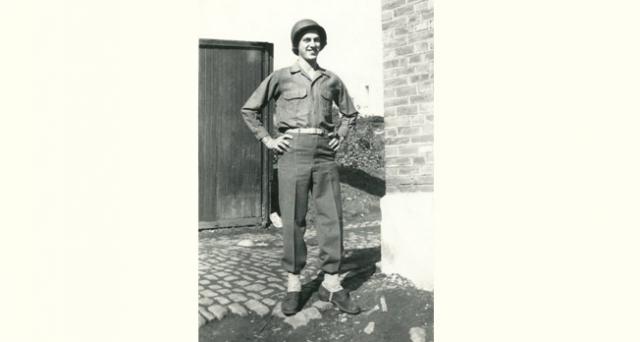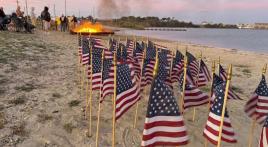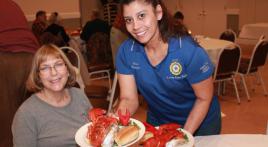Ernest Shepherd was drafted into the Army in 1943. He hadn't yet graduated high school and had spent his whole life on his father's small farm in Tennessee - twice transplanted by eminent domain - but would soon serve as a medic across the Atlantic in the European theater.
While treating wounded troops in a hospital in Liege, Belgium, Shepherd heard what sounded like a modern-day helicopter. "You knew to hunt a place to hide, find something to get behind," he said. Then, a blast. "It hit about I'd say probably 300 feet from where I was on the second floor." It was a German buzz bomb. "It was a bomb that looked like a small plane except it had a fire shooting out the tail-end of it."
Shepherd said it blew out all the windows in all the buildings several blocks around the hospital. Glass fragments hit him in the face. "That's how I received a Purple Heart," he said. He said the hospital was full, with more than 1,000 patients at that time, that the bomb killed more than two dozen people, more than half of them GIs.
But its aftermath would not be the most horrific image he witnessed during his service. He would join the infantry as a medic. While on the move, they came upon some houses.
"This one house we went in, the Germans had shot point blank through a brick house and killed three of our men," Shepherd said. The men had gotten there before the rest of the group. "I guess that’s one of the worst sights I'd seen right up close personally.
One of the men's heads was missing. Another man's torso was destroyed. Shepherd couldn't bear to see the third. "The other one killed was out in the yard, and I didn’t go up to him to see."
But it wasn't just seeing the horrors of war on American soldiers. Each heartache, no matter the side, could take its toll.
"I know we were going through a small town and they captured this young man. He was AWOL from his German company and so they just took him and ... as we were marching out of that little village, his mother was walking along beside us - begging, crying, carrying on like that to release him. I thought well if that was turned around and that was my mother, she’d be doing the same thing.
"There were some things that were really sad but you just had to go through with it.”
But there were bright spots. For instance, running into his brother Henry on a foreign continent near the end of the war.
While resting up, Shepherd began looking at the writing on the tanks passing by. "I said, 'Golly gum, that's the 'fit my brother's with. ...' Sure enough he'd seen me, too." But Henry thought his brother was "some officer" pointing out directions rather than his brother waving hello. Shepherd discovered Henry's outfit went ahead of his about two miles and stopped for the night. Shepherd got a ride with one of the Jeep drivers, made some inquiries and was taken right to his brother's tank.
"It sure was a wonderful feeling and a surprise to see him," he said. They took photos with each other and swapped stories. The next morning, Henry drove Shepherd back to his company. "He said to me - he was much stronger than me. He said, 'Brother, you just go back and rest. I'll do the fighting.'"
After the war ended in Europe, Shepherd began training with weapons to go to Japan. He said in Europe, medics weren't armed, but in Japan they would be. But the atomic bombs brought an abrupt end to the war, and soon Henry would return home, Shepherd following in December.
"When I came back from overseas and came through the New York harbor and passed the Statue of Liberty, I looked up to the Lord and said, "Thank you, Lord for bringing me through all this safely.' There’s a lot of them that did not. ...
"When I came home, I got out of the Army in Fort Knox, Ky., and rode a bus to Tennessee, caught a taxi out to the country ... where my parents had moved to," he said. "I got there about midnight, and they let me in the house. That must have been a wonderful time for our mother - to see the last of her children come home safely from the war. She was religious, and she just sat up in the bed and shouted. I get choked up when I tell that.”
He would find that one of the times the government had forced the family to move, it had been from the area the Oak Ridge National Laboratory, where much of the work on the atomic bomb had happened, was built. After marrying his wife in 1949, he would eventually end up working there, building displays for wonders of technology and space, including rocks from the moon.
Now retired, he spends his days in Tennessee with his wife and family.





